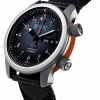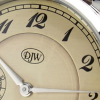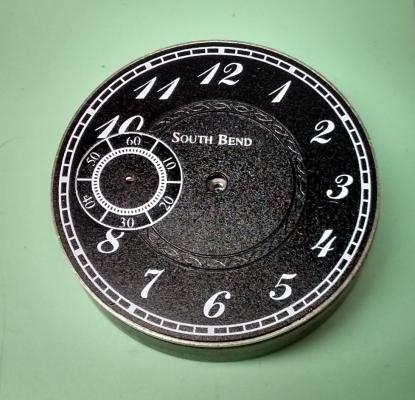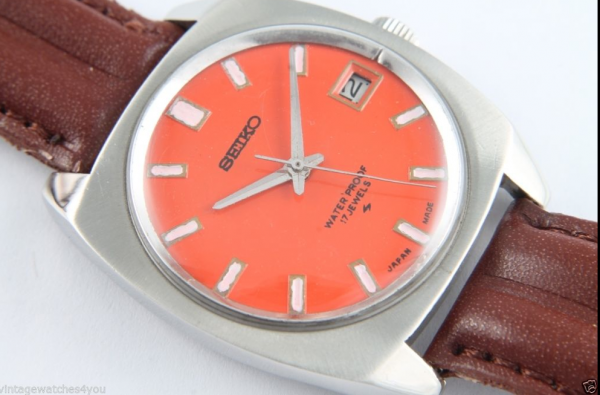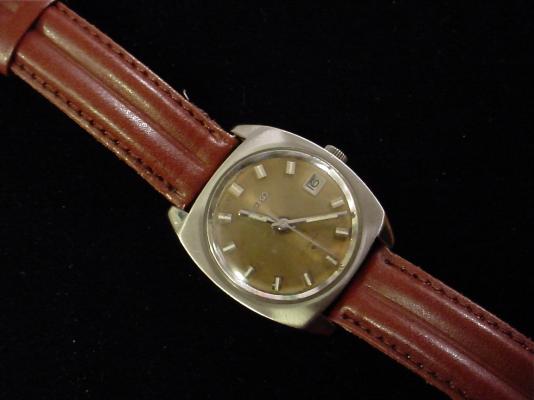Leaderboard
Popular Content
Showing content with the highest reputation on 06/13/17 in all areas
-
Buying online is pretty safe. Always 'buy' the seller. Check out the feedback but be warned, there are people selling feedback. Selling online is a gamble, I've been burned before but I only sold basic stuff so the hit is not too bad. COuld be bad if you're selling a Rolex! Now I prefer to sell locally via FB groups. The hardest part about selling a used watch is that people expect them to work as good (or even better) than a new watch. Not really possible on a 40year old mechanical watch without spending a boatload of cash. A 36,000bph movement was an accurate movement in its day but getting one working to original specs would be challenging. Water resistance on older watches is also hard to achieve. Case in point, Seiko Divers. While there are a lot of guys selling replacement rubber stuff. It is not possible to fix damaged case-backs/case without getting it laser-welded and milled Therefore water-resistance will never be 150m. Crown seals can be swapped out but the quality of replacements are uncertain. Not saying its not possible, but if it was easy there would be a lot more guys doing it! Anilv2 points
-
Last night whilst reassembling a Felsa 1560 I fired the Return Bar Spring from the keyless work across the room, 45 minutes of searching failed to find it. I'm now about to spend £5.81 plus £2.88 postage to get another one from Cousins. It was bound to happen to me sooner or later, just hope it doesn't happen too often.1 point
-
I love mechanical things, not least the watches, clocks and other mechanical hardware. To be able to repair watches have been a wish in a really long time. Unfortunately I have not had a real place to practice and must recognize that doing it in the kitchen just cannot be reconciled with the family. That is why I am now going to remodel our 70 's garage into a workshop and hobby room for joy for me and the rest of the family. It is anyway too small for a modern car. The garage is at about 6.8 x 3 m. and there for approx. 20 square meters. The redevelopment will be extensive as i have to make heating and floor heating window and a small kitchenette. I am now almost finished clearing out the garage so that the work can begin. I will put up some pictures every now and then as the project progresses!1 point
-
Big up to mark for this afternoon's YouTube livestream! Spot on mate! Really good afternoon's viewing! Let's have some more mate! If you didn't watch it today get on to his YouTube watchmakers channel & enjoy! Many thanks again mark! [emoji1303] Sent from my iPhone using Tapatalk1 point
-
I used the vacuum method at length trying to find a rare plate screw. I never found it. Then a couple of weeks later I was sitting at my bench in bare feet and I felt something under my foot. It was the plate screw. So, maybe walking around your shop in bare feet might work too.1 point
-
Just finished assembling my test having cleaned it all yesterday. Many of the jewels were in bad shape and I suspect I haven't exactly improved them. It doesn't run of course... Still, I thought that the balance would be the biggest problem as the sight of a hairspring gives me a nasty feeling, but that's fine. It's just the entire train that seems locked solid. Many hours spent and I hope not wasted. It'll be a while before I attempt to clean something of value. I have at least a hundred of these in variously bad condition so it'll be a while before I run out of cadavers to dissect. Roy1 point
-
Chime train works. I had to assemble, disassemble and reassemble it a few times but both the chime and bell work. Now to dismantle it again and attach the springs. I believe the wheel will fit in the end of my 4126 Bergeron winder. I was afraid I'd have to use the 'bit' that goes with the winder and then mess around transferring it to the arbour but it looks like that won't be necessary.1 point
-
I recently worked on a Seiko diver and got it water resistant up to 6 bar. It was probably better than that but that is as far as my water tester goes. New seals & new pipe (if required) and a smidgen of grease inside the tube, silicone the case back thread and use a decent case back tool to tighten and they are just fine.1 point
-
Nice... I've noticed a few Rado movements that seemed of one jewel .. then I realised they also counted the jewel on the dial (where the anchor is located)! Anilv1 point
-
to add.. Looking top-down on the jewels to see if the pivots are in place doesn't really work.You need to eyeball it from the edge, the wheels should be level (the escape wheel is usually the last to get in place) and there should be no gaps between the bridge and mainplate. Even when you're sure the pinions are in place, give the mainspring a push by using a tool on the barrel-edge where it shows on the side of the movement.. everything should spin freely. Turn the bridge screws a few turns each and push the barrel edge again... You will reach a point when the bridge is fully home and wheels are turning well, this is when you finally use a bit more force to fully tighten the bridge. If you're assembling the movement with the train wheels first followed by the barrel/barrel-bridge. You can use the same technique but push the arms of the centre wheel instead. HTH Anilv1 point
-
Pull the stem out as if you are setting the hands, with case screws out you might need to give it a little push with your fingers from the opposite end from the stem, it should come out.1 point
-
Yeah, it's a whole lot of chromed-shininess and not much substance! It is however, in excellent shape for being 40+ years, so it has that going for it. J1 point
-
Well, I put the time train in after cleaning, attached the pendulum and pallet and it ticks happily away. I'm not sure if I'll be so lucky with the chime train. Dave1 point
-
wd40 is not the right stuff ! penetrating oil and -or - heat will do the job. vinn1 point
-
So it's been a few months since I posted here...but I've been regularly checking in. Hi Mark and Geo! So as a few of you know, I have a hobby of building watches. The one thing I hated was relying on some of the very few companies that actually print dials. Here is the USA there are only a handful that do this type of work! I was lucky enough to find an antique dial printing machine on eBay. It was just a vessel to move the dial from printing plate to paint application. I found a willing company to "Fill in the Blanks!" I won't name them here because I don't want to seem like I'm Selling this company! Anyway, they were a very big help when it came to me having questions. The sales, engineering and billing staff were first rate! They helped me pick the proper printing pads, helping me design and then produce my printing plates and then help me choose the proper ink and also recommended how to prepare the inks, pads and thinners to get the best results! So, here I am....First try at printing a dial.... I designed the dial myself using a free online software. The dial is printed in 3 stages. The first step was printing the hour chapter. Then, the second step was to print the sub seconds chapter. Lastly, I printed the name of the manufacturer that I will be using for this build. This was more of a proof of concept to me...Now, I can't wait to try new designs and styles! And, Now I have more control of what I build! That's very important to me...Cheers!1 point
-
A watch repairer in Winnipeg told me to put the clock back together and take it apart and repeat the process until I know what I'm doing. He also told me I'd know if I did it wrong because it wouldn't work. Helpful advice...1 point
-
If you roll a strong flashlight slowly across the floor, sometimes the part will make a shadow and appear larger. I have found missing parts like that. A magnet is also a life-saver. Sometimes I sweep the dust on the floor into a dustpan and run the magnet over the dustpan. Most of the time, though, I'm on my knees either cursing or praying (both techniques work equally as well). Seems my cursing sometimes makes the part mad enough to appear, and if that doesn't work, the praying may buy me a little mercy and the part, feeling sorry for having treating me so harshly, will come crawling back. Whatever your part or whatever your technique, know that you are not alone and all your forum peers are right behind you, cheering you on (with little or no snickering). Shirley1 point
-
Welcome to the Club! Did you try the vacuum approach? - vacuum the carpet then go through the dust bag? Magnet approach? - trail a magnet on a string over the area? Or did you fall on your knees, cursing creation? - that sometimes helps!1 point
-
I received a $6 Seiko 6602-8070 today from a seller in India . I originally bought the watch because I needed the crown and stem to finish off another 6602 project I had been working on . I also had ordered a 4 watch lot of donor 6602's that were delivered earlier so I got the stem and crown from one of them to finish my project . The $6 watch has a nice clean movement , a nice style case , and a very good crystal....but the dial is very much less then desirable looking , and is glued on because of broken dial feet . I decided to trade it out with one of the donor watch dials but they were all pretty much dirty , grimy , and moldy....so I chose one and decided I would try the baby oil cleaning technique mentioned in the earlier post ...no stress on messing it up because it was a donor and I still had 3 other dials I could use . It cleaned up really well with no damage and I was able to remove the oil and dirt with diluted dish washing soap and a ladies cosmetic brush . Pardon the bad pics ...it actually looks better .1 point
-
Welcome Bill3 , I'm a new guy on this forum too . I also belong to other forums and have seen rude remarks made to honest simple questions . But lets not dwell on that . I personally have ruined more dials than I have improved so heed any cautions you see here ...you can't undue going to far on trying to clean the dials . I've learned quite a bit on this post already . Good luck with your watches .1 point
-
Good morning guys. Dials can be freshened up with very gentle cleaning. Before I say what I do, I will tell you NEVER put a dial into a rotary watch cleaning machine, and in particular a ultrasonic cleaning machine as you will almost certainly incur damage. I know, I've done it. Remember not all dials are the same, you have solid precious metal, ceramic and paint/transfer finishes, there probably are others but this will do just now. Please remember that this is how I have successfully cleaned these types in the past, I do this as a hobby and some of the professionals amongst us may disagree, although I hope not. For old pocket watches with solid gold or silver dials, I very gently remove the tarnish and very gently polish with a silver or gold cleaning cloth. These cloths are impregnated with the correct very fine polishing media, and give a beautiful lustre finish. Be very careful as the numerals will be paint filled and may have deteriorated with age. For porcelain enamel dials, I use a cotton bud with a little bleach on it. This will remove any oil staining and general age related muck easily, leaving the dial looking like new. Once you have it nice and clean, give it a good rinse in water to remove any bleach residue. Most dials of this type have the numbers fired into the enamel and are not delicate, but I still suggest you take care. Most of my work involves restoring vintage wristwatches, and these dials are particularly vulnerable to damage when cleaning. If there is any flaking evident, leave the dial alone as cleaning will make it worse. To clean a dial, I use a cotton bud dipped in dilute ammoniated watch cleaner and gently swab the surface. Do not press hard and don't take any longer than need be to enhance the appearance. This solution will also brighten any metal markers on the dial which is an added bonus. Once done give the dial a good rinse in clean water to remove all traces of cleaner. Now blow off excess water with a puffer and leave to dry. (A small drop of washing up liquid can also be use if you do not have the ammoniated cleaner). Once dry, and only if the dial is not meant to have a matt finish, give the dial a delicate polish by gently stroking it with a "gold polishing cloth" as previously mentioned for precious metal dials. This results in a lovely lustre. NB. I am not recommending you do any of the above on the off chance you cause damage your dials, but it does work for me.1 point







